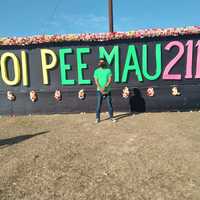Nitul Sut
DDR College (Dibrugarh University), Department of English, Faculty Member
Research Interests:
Coleridge's interest in dreaming and nightmares inform his writing as a poet and his speculation on a range of issues in psychology and metaphysics. It also affords clues to his own troubled inner world. Coleridge originally took opium in... more
Coleridge's interest in dreaming and nightmares inform his writing as a poet and his speculation on a range of issues in psychology and metaphysics. It also affords clues to his own troubled inner world. Coleridge originally took opium in its medicinal form but his sustained use created a dependency on it. Coleridge claimed that the poem "Kubla Khan" had come to him under the influence of Opium. His an another poem "The Pains of Sleep" wrote in the midst of long walk alone across Scotland in 1803 during which he was probably suffering from the withdrawal symptoms of opium addiction. In 1953 in "Coleridge, Opium and Kubla Khan" Elizabeth Schneider noticed that the most of his comparison of the states of dreaming and dramatic illusion was derived from Erasmus Darwinian. Coletidge himself never actually analyzed his own dreams from an interpretative prospective. How we dream is a hope compelling question than what we dream. Coleridge's dream may seem less astonishing than that of his precursor. "Kubla Khan" is a remarkable composition, and the nine line hymn dreamed by Caedmon barely displays any virtues beyond its oneiric origin; but Coleridge was already a poet while Caedmon's vocation was revealed to him. There is, however, a later event, which turns the marvel of the dream that engendered "Kubla Khan" into something nearly unfathomable. If it is true, the story of Coleridge's dream began many centuries before Coleridge and has not yet ended.
Research Interests:
The fear of uncertainty has created an enabling environment for the exacerbations of abuses against women. The required action of social distancing, key community resources closure, and restricted travel has been acted as major factors... more
The fear of uncertainty has created an enabling environment for the exacerbations of abuses against women. The required action of social distancing, key community resources closure, and restricted travel has been acted as major factors for violence against women. Violence against women and social role is also one of the major factors of concern. In these situations, policymakers are expected to acknowledge the situation and emphasize the need for people to live in a social sphere maintaining social norms by taking all the precautions. Apart from that, the formation of support groups and access to them is an important measure. As noticed earlier any crisis has a direct impact on women and violence is one of the major issues to address. The epidemics have also affected the woman's confidence to retaliate in such situations. The coercive control mechanism in the patriarchal thought process gets a space in this vulnerable situation and women to become victims of violence. The efforts made for gender equality over the years are also on hold and somewhere going in a regressive direction.
Research Interests:
The paper has been drafted to critically evaluate the heart of darkness and it portrays of Africa and Africans. It has considered Chinua Achebe's criticism of the novel as a means for "dehumanization of Africa and Africans." For the... more
The paper has been drafted to critically evaluate the heart of darkness and it portrays of Africa and Africans. It has considered Chinua Achebe's criticism of the novel as a means for "dehumanization of Africa and Africans." For the critical evaluation of the assertion different perspective has been taken. The novel has been critically evaluating from the perspective of the Chinua Achebe and other writers. In the later section, the writing of Conrad has been evaluated based on the circumstances and the perspective of that era. Lastly, the assertion has been evaluated based on the period of critics like Chinua Achebe. Reading and evaluating the work of Conrad in the 21 st century is itself a different perspective. When the novel has been published, no critic has pointed out that it's writing to the dehumanization of Africa and Africans. However, in 1902, "An Image of Africa" has been evolved. The critics like Chinua Achebe know that its perspective will be well understood in that period. Though the meaning of the words remains the same the ideas that had been construed from it have to keep on changing based on the period and the circumstances of that era.
